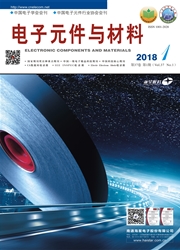

 中文摘要:
中文摘要:
对湿法炼锌净化渣的浸出动力学进行了研究,并探讨了硫酸浓度、反应温度、粒度等对钴、锌浸出率的影响规律。从动力学的角度分析了整个浸出过程,得到优化条件:液固比50:1(mL/g),硫酸浓度100 g/L,反应温度70°C,粒度75-80μm,反应时间20 min。在此优化条件下钴的浸出率为99.8%,锌的浸出率为91.97%。结果表明:在硫酸体系中钴的浸出符合不生成固体产物层的“未反应收缩核”模型。通过 Arrhenius 经验公式求得钴和锌表观反应活化能分别为11.693 kJ/mol和6.6894 kJ/mol,这表明浸出过程受边界层扩散控制。
 英文摘要:
英文摘要:
The leaching processes of zinc plant purification residue in sulfuric acid solution were investigated with respect to the effects of sulfuric acid concentration, reaction temperature, and particle size. A particle size of 75?80 μm was required to leach 99.8%cobalt and 91.97%zinc at 70 °C for 20 min when the sulfuric acid concentration was 100 g/L and the ratio of liquid to solid was 50?1 (mL/g). The leaching kinetics of zinc plant purification residue in sulfuric acid solution system conformed well to the shrinking core model, and the dissolution rates of cobalt and zinc were found to be controlled by diffusion through a porous product layer. The apparent activation energy values of cobalt and zinc reaction were calculated to be 11.6931 kJ/mol and 6.6894 kJ/mol, respectively, according to the Arrhenius formula equation. The results show that diffusion through the inert particle pores is the leaching kinetics rate-controlling step.
 同期刊论文项目
同期刊论文项目
 同项目期刊论文
同项目期刊论文
 The Preparation and Characterization of LiFe0.98Mn0.02PO4/C by Spray-drying and Low Temperature Redu
The Preparation and Characterization of LiFe0.98Mn0.02PO4/C by Spray-drying and Low Temperature Redu Synthesis of Li3V2(PO4)(3)/C with high tap-density and high-rate performance by spray drying and liq
Synthesis of Li3V2(PO4)(3)/C with high tap-density and high-rate performance by spray drying and liq Characterization of multiple metals (Cr, Mg) substituted LiNi0.8Co0.1Mn0.1O2 cathode materials for l
Characterization of multiple metals (Cr, Mg) substituted LiNi0.8Co0.1Mn0.1O2 cathode materials for l 期刊信息
期刊信息
